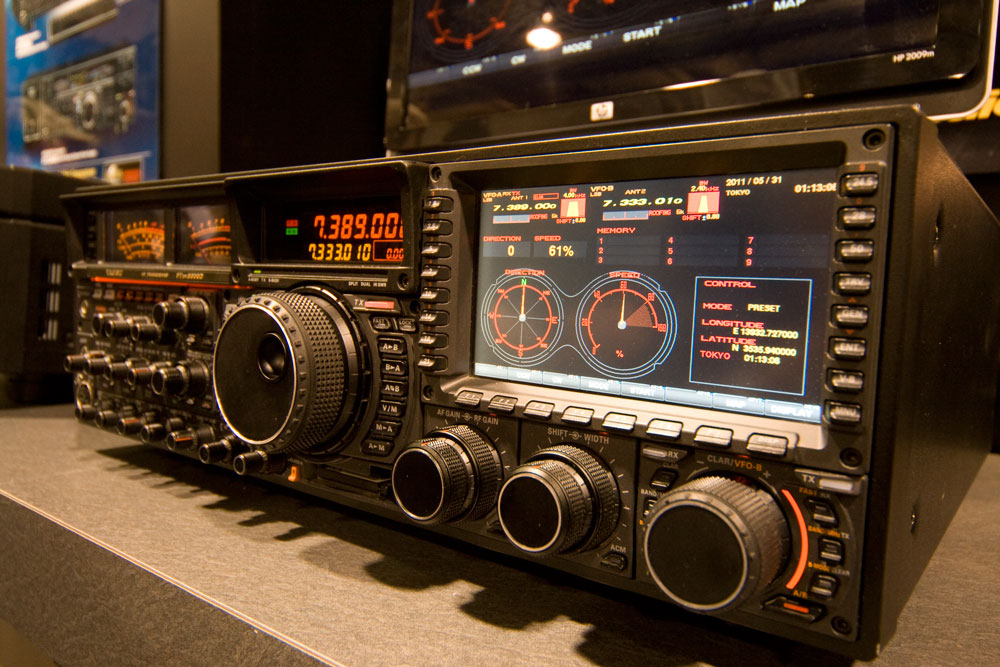At GunDigest, we independently review products. However, we may earn a commission when you purchase through links on our site. Learn More
Emergency Radio: The Day the Cell Phones Died – Part 3

Editor’s Note: This is the third of a 3-part series looking at two-way emergency radio for disaster preparedness. Click here to read part I. Click here to read part II.
A Look at the Radio Services: The Amateur “Ham Radio” Service
Arguably the most versatile of the emergency radio services, amateur radio allows you to operate on virtually every mode and band, and push out a full legal limit of 1500 watts. You’ll need an amateur radio license to transmit. There are license classes — Technician, General and Extra Class and each requires a few weeks of study and gets progressively more difficult to ace. But with each new license upgrade, you attain access to more bands and modes. The Federal Communications Commission (FCC) administers licenses while testing is handled by certified Volunteer Examiners (VEs) through local ham radio clubs. Study manuals for each license class are available through the American Radio Relay League. Incidentally, earning a ham radio license has gotten easier recently since the FCC dropped the requirement to learn Morse Code.
The benefits of ham radio for emergency communications include access to other local, state, national and global radio operators who are capable of staying on the air even during power outages and failures of the grid. You can operate FM, AM or Single Sideband (SSB) modes using voice, CW (morse code) and data modes from the high frequency (shortwave) bands through the ultra high frequency (UHF) spectrum for crystal clear local and statewide FM communications. You can find out what’s happening. And you can get a signal out to get help.
Citizens Band (CB)
You don’t have to be a wayfaring trucker careening down the open road to realize the benefits of Citizens Band or CB radio. While described by some as a “wasteland” — a reputation gained by rampant on-air vulgarity in some parts of the country — CB radio operates in the 11 meter band (26.965 – 27.405 MHz spectrum range) on 40 designated channels, and is quite useful for emergency use. Radios can receive and transmit in FM, AM or SSB modes but are limited to 4 watts (AM) or 12 watts (SSB). Unlike some of the other radio services, Citizens Band no longer requires a license, though there are rules you need to follow. Amplifiers used to boost output power are prohibited and you must observe height restrictions on antennas. You are also required to assume a “handle,” though it’s a safe bet that “Rubber Duck” has already been taken.
General Mobile Radio Service (GMRS)
The General Mobile Radio Service (GMRS) requires one adult, who is the head of the household, to obtain an FCC license. The license covers your immediate family, and gives you access to local- or intermediate-range communications between family members. Some handheld GMRS radios claim up to a 36-mile range, but most GMRS units are handheld “walkie-talkie” style and are limited to 5 watts, making them much shorter distance options. While the actual power limit is 50 watts for this service, there is a loosely-scattered network of GMRS repeaters around the country (a repeater is a high powered station that receives weak signals and retransmits the signal on a different frequency at high power to cover a much greater distance) so if you need to stay in contact with family located over a few miles a way (but less than 50) GMRS may work for you.
Family Radio Service (FRS)
Similar to the GMRS, the Family Radio Service, or FRS, is intended to keep, as its namesake implies, family members in contact with one another. You do not need a license to operate a radio in this service. However, FRS is considered a close-range proposition, due to the fact that radios are limited to one-half watt. In practical terms, FRS radio is a one-mile or less choice. One thing to note: Many FRS radios have GMRS capability, so be sure not to operate the radio outside of the FRS limits unless you have the GMRS license. That being said, one principle of preparedness is using gear that covers more than one use. Thus, one of the handiest units I’ve seen in this category is the Garmin Rino — a GMRS/FRS radio with full Garmin GPS capability. Not only do you get two radio services covered with one transceiver, but you can find your way to safety (assuming the satellites are working).
Low Power (LPRS) and Multi-Use Radio Services (MURS)
Two final, less popular options are the Low Power Radio Service (LPRS) and Multi-Use Radio Service (MURS). The former uses one-way radio to transmit voice or data information to disabled persons. The latter, MURS, is a two-way service with five allocated channels in the VHF band. Radios used for this service are limited to 2 watts; a license is not required.
Conclusion
There’s only one thing you can absolutely count on when it comes to your cell phone: It will fail — probably when you need it the most. However, long-range communication is still possible if you plan now to incorporate two-way radio into your family preparedness plan. Sometimes, your ability to get a signal out is your only lifeline to outside help. Don’t entrust your family’s safety to a telecomm company’s flimsy cell phone network. Instead, get an emergency radio now and get on the air, while you still can — and stay on the air, when all else fails.
Next Step: Get your FREE Printable Target Pack
Enhance your shooting precision with our 62 MOA Targets, perfect for rifles and handguns. Crafted in collaboration with Storm Tactical for accuracy and versatility.
Subscribe to the Gun Digest email newsletter and get your downloadable target pack sent straight to your inbox. Stay updated with the latest firearms info in the industry.